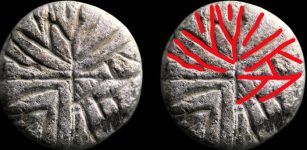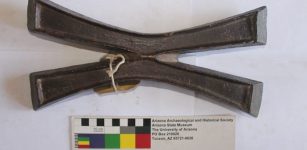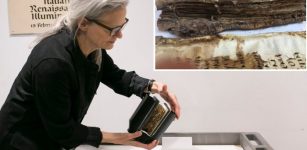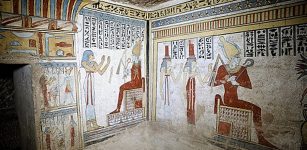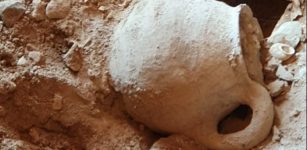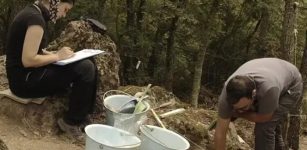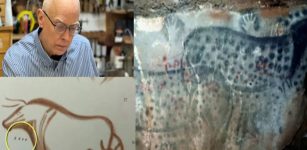13 Ancient Terracotta Figurines Associated With Cybele And Attis Unearthed In Pompeii
Jan Bartek - AncientPages.com - During excavations of a domus north of the house of a Leda and the Swan in Pompeii, archaeologists unearthed 13 ancient terracotta figurines.
Credit: Archaeological Park of Pompeii
According to experts, the figurines are cult objects associated with the tragical myth of Cybele and Attis. As the myth tells, the Phrygian great mother goddess Cybele fell in love with a mortal man known by the name Attis. Unfortunately, Attis is unaware of Cybele's feelings and falls in love with the king of Pessinus’s daughter instead. This made Cybele insanely jealous, and she drove Attis mad as revenge. Running like a crazy man through the mountains, Attis stopped at the foot of a pine tree, where he castrated and killed himself. From Attis' blood sprang the first violets, and the pine tree took care of his spirit.
The unearthed figurines, about 15 cm in height, were found upright on a horizontal plane, practically placed in a row on a shelf lost in the eruption of Vesuvius in 79 A.D. inside a small room.
Among the human figurines, archeologists also found a walnut, an almond, the head of a rooster in clay, and a glass pine cone, all placed in an upright position on a horizontal plane where a shelf was probably affixed.
According to a press statement issued by the Archaeological Park of Pompeii, the sculptures emerged from the pumice at a height of over 2 meters above the floor level. The walls of the room that contained them, probably the house's atrium, were painted, and frescoes have emerged on the upper part of the walls.
From initial studies, some of the figurines seem to refer to the myth of Cybele and Attis, which is connected to the life cycle of the seasons and the fertility of the earth, and thus to the spring equinox.
Credit: Archaeological Park of Pompeii
The work in progress focuses on the rooms already uncovered in the House of Leda (discovered between 2018 and 2019 as part of the works envisaged by the Great Pompeii Project) and those of two houses, not yet fully defined, to the north and south of the House of Leda.
During the removal of the material still present in some of the rooms of the House of Leda, in order to reach the level of the floor, a finely frescoed room also emerged in which four roundels with female faces of refined elegance stand out.
See also: More Archaeology News
The purpose of the excavation is to consolidate and stabilize the edge of the site (the boundary between structures already exposed and the unexcavated areas) and to safeguard and conserve the buildings and decorative schemes in preparation for access to the complex by the general public in the future.
Written by Jan Bartek - AncientPages.com Staff Writer







